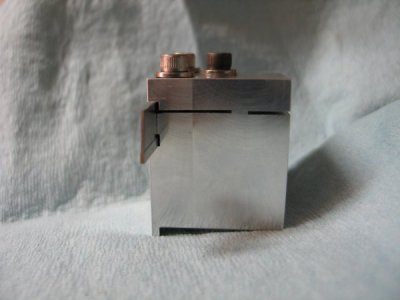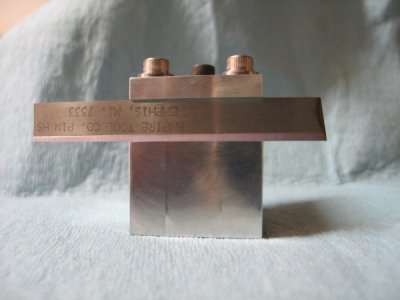In a rear mounted parting tool holder, I don't think you need to go larger than the P-type blades. Ordinarily, the size of the blade is supposed to increase with the part diameter but when mounted in a tool holder like mine the blade is held so rigidly that you can get away with a much thinner blade. In addition, the relief angle on an upside down parting tool acts like back rake but on a parting tool, this is essentially side rake. As we know, side rake is the most influential tool angle that affects cutting forces and you will feel the reduced feed requirement when using one like this. Essentially, a thinner P-type blade mounted upside down cuts with lower cutting forces and cutting temperatures so you can easily get away with using a P1 or P2 for almost all work.
An upside down blade also improves oil delivery because the oil gets to the cut first so the cut is cleaner and cooler. In contrast, the chips when using a right side up parting tool carries much of the oil away before it even gets to the cut.
The other advantage when mounting a blade like this is that it allows you to extend the blade however far you need to without worrying about the tip being off center. You will find that blade extension on a rear mounted tool is not critical; I don't even think about it as long as I can reach the center of the part. Sometimes the blade can be 2-4 times the required extension and the blade works just fine, even when I am parting at excessively high speeds.
Speaking of parting speeds, a sharp rear mounted parting tool cuts very fast and easily at higher speeds. You do not need heavy feed pressure with this set up. As long as you can feel a slight resistance to the feed and you can keep up with that, the tool will cut with no issues. I have parted aluminum at 2200 rpm, steel at 1200-1500 rpm and so on. No problems, no dig ins, no chatter.
Make one, Trav. It is worth it.



